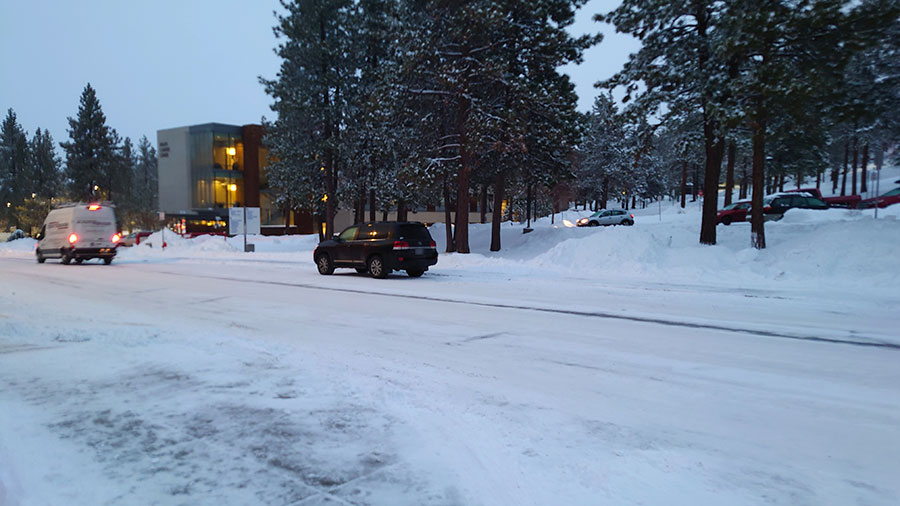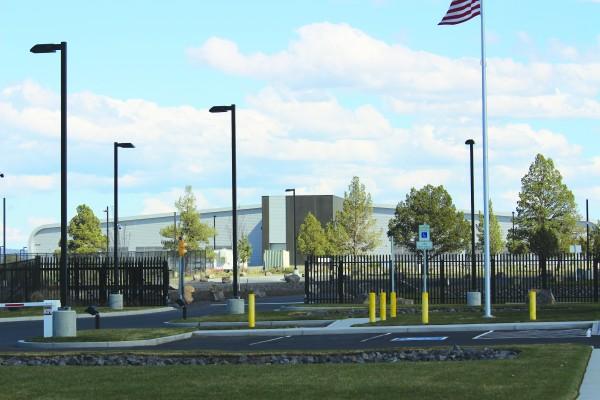Data centers use a large amount of energy and contribute very little to Oregon’s economy, which could be worsened by Senate Bill 611.
On March 20, the Oregon Legislature passed SB611, which will renew and extend the current data center property tax exemptions.
Why Oregon?
Currently, there are more than 14 major data centers spread throughout Oregon, including Apple and Facebook in Prineville and Google in The Dalles.
These companies are drawn to Oregon because of its cheaper energy prices, no sales tax, property tax abatement agreements for companies that build in ‘enterprise zones’ and local rivers that do have the potential to produce inexpensive hydropower. An online tour of the Prineville Facebook data center also attributes Central Oregon’s mild weather and dry air to helping keep data the centers cool for most of the year.
While Oregon bears the burden of increased CO2 emissions due to greater energy usage, data centers benefit from substantial financial savings.
Financial Implications
According to the state-funded website, Business Oregon, there are currently 66 enterprise zones in Oregon that “exempt businesses from local property taxes on new investments.”
The goal of these municipal- or tribe-sponsored enterprise zones is to attract new investment, development and jobs to Oregon.
The data center-specific Senate Bill 611, however, “Removes, for purposes of exclusion from central assessment, [the] requirement that [a] data center company have [a] tax abatement agreement with sponsors of enterprise zones.”
Essentially, the bill relinquishes data centers from the 70 plus pages of regulations under Chapter 285C, which regulates the number of enterprise zones available throughout the state and also specifies requirements for job creation and training for local residents, environmental protections, growth management and efficient infrastructure.
According to OregonLive.com, Facebook was obligated to employ at least 35 people “at 150 percent of the annual average wage in Crook County” under its enterprise zone agreement. Apple was obligated to employ at least 35 as well.
Currently, the Facebook data center in Prineville employs 126 local employees and Apple only employs a few dozen, according to OregonLive.com. While this meets the provisions of their respective agreements, it does little to help Crook County’s 9.5 percent unemployment rate.
The benefits of the data centers were predominantly seen during their construction and development, according to Judge Mike McCabe, Administrator for Crook County, in an interview with OregonLive.com.
“They come down here, they eat in our restaurants, they fill up our hotels,” said McCabe.
Facebook spent $210 million on the construction of the Prineville data center.
As compensation, Facebook saved $4.4 million in 2012 and $12.2 million in 2014 thanks to the tax breaks under its enterprise zone agreement, according to OregonLive.com.
Google saved even more: “Wasco County estimates the enterprise zone saves Google $24 million a year in The Dalles, nearly twice the company’s hefty power bill,” stated OregonLive.com in a separate article.
However, enterprise zone agreements come equipped with an expiration date after which data companies would be subject to the state’s ‘central assessment’ taxation laws that would severely limit their savings each year.
Oregon’s ‘central assessment’ form of taxation includes the entire value of a company’s brand when determining how much property taxes to assess, instead of just the appraised value of the land and building where it operates.
SB611, however, would continuously “appraise [the] company’s property using provisions of exemption that result in [the] lowest taxable value,” according to the bill.
According to the state’s assessment of the Revenue Impact of the Proposed Legislation, the bill will result in a nearly $8 million dollar loss for local governments each year by not allowing the tax exemptions established under enterprise zone agreements to expire.
While Facebook has made fairly frequent contributions to various organizations in Prineville, including a $7,500 Local Community Grant just this last month, according to its Facebook page, the contributions are at the discretion of the company and in no way total the $12.2 million it saved in property taxes last year.
Environmental Implications
“These mega data centres, which will draw from some of the dirtiest generation mixes in the US, highlights the sway of low-cost energy, misplaced tax incentives, and a corresponding lack of commitment to clean energy,” said Greenpeace International in its April 2011 “How dirty is your data?” report.
According to Greenpeace’s April 2014 “How Companies are Creating the Green Internet” report, across the globe, the use of cloud computing requires more energy than the whole of the UK and individual countries such as France, Brazil, Canada and Germany.
The majority of energy used by data centers is used to cool and regulate temperatures for the servers.
Overall, Oregon’s electricity comes from a combination of predominantly hydroelectric power (about 45 percent), coal (about 33 percent) and natural gas (about 12 percent).
“Google won’t say how much electricity it uses in The Dalles, but its total can be inferred from growth in power sold to ‘primary service’ customers since its data center opened in 2006,” reported OregonLive.com in 2011. “Google apparently uses about 330 million kilowatt hours annually, equivalent to about 27,000 homes, with a power bill around $13 million.”
The average data center requires 30 to 40 megawatts of energy and even renewable energy sources, such as hydroelectric power, contribute to CO2 emissions.
Facebook and Apple data centers
Currently, Apple is the only major data company in the world to receive Greenpeace’s 100 percent Clean Energy Index score, meaning 100 percent of its energy is supplied by clean energy.
“Oregon allows the direct wholesale purchase of renewable energy through Direct Access, and Apple is using this program to opt out of the default grid mix and directly access local renewable energy sources, such as wind, hydro, solar, and geothermal power — enough to power the entire facility,” reported Apple on their website.
To help supplement Apple’s monstrous energy needs, which are 100 percent supplied through renewable wind energy, Apple took control of the 45-Mile Hydroelectric Project, located 20 miles northwest of Prineville near Haystack Reservoir.
“Prior proposals had described the project as generating 3 to 5 megawatts,” reported OregonLive.com in April of last year. “That’s enough to power roughly 2,000 to 3,500 homes, but big data centers can exceed 30 megawatts – and really large complexes require significantly more than that.”
Facebook, on the other hand, utilizes an on-site, 100-kw solar array that “generates an estimated 204,000 kilowatt hours per year,” according to its Facebook page and powers the on-site office areas within the data center, which accounts for only roughly .03 percent of its energy needs.
Facebook also takes advantage of some Pacific Power’s renewable energy option. However, according to the Oregon Department of Energy, Pacific Power still uses coal to supply 67.4 percent of its energy, by far the highest percent out of all the other major provider in Oregon. Portland GE uses coal to supply 30.3 percent of its energy.
According to the 2014 Greenpeace report, only about 17 percent of the power supplied to the Facebook data center is from clean energy sources.
Kelli Pangle | The Broadside
(Contact: [email protected])
















